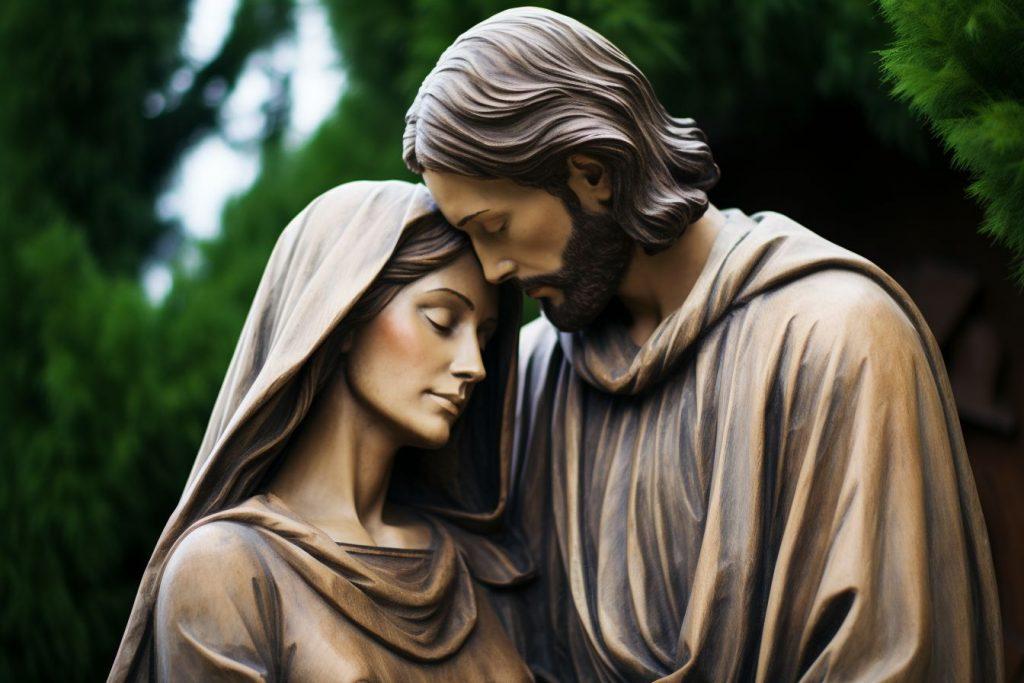Brief Overview
- The Sign of the Cross is a fundamental gesture in Catholic practice, used by millions of faithful worldwide.
- It involves tracing a cross over the body, typically with the right hand, while invoking the Holy Trinity.
- Catholics believe this act carries spiritual significance, rooted in tradition and theology.
- Stories of its power often circulate, from protection against evil to physical healings.
- This article examines whether the Sign of the Cross truly holds miraculous power, according to Catholic teaching.
- It provides a clear, scholarly look at its history, meaning, and effects based on Church doctrine.
Detailed Response
The Origins of the Sign of the Cross
The Sign of the Cross traces its roots back to the early centuries of Christianity. Historical records show that Christians used this gesture as early as the second century. Tertullian, a Church Father, wrote around 200 AD that believers marked their foreheads with a cross in daily life. This practice grew from a simple act of devotion into a widespread ritual. It was not a random development but tied to the Church’s understanding of Christ’s crucifixion. The cross became a symbol of victory over sin and death. Over time, the gesture expanded to include the full form we know today: forehead, chest, and shoulders. Bishops and priests later formalized its use in liturgy and blessings. The Catechism of the Catholic Church highlights its importance as a sacramental (CCC 1667). Today, it remains a constant in Catholic prayer and worship.
What the Gesture Means Theologically
The Sign of the Cross is more than a physical motion; it carries deep theological weight. When Catholics make this sign, they invoke the name of the Father, the Son, and the Holy Spirit. This act recalls the mystery of the Trinity, central to Christian belief. It also points to the crucifixion, where Jesus offered himself for humanity’s salvation. The gesture unites the believer with that saving act. The Church teaches that it is a profession of faith in Christ’s victory. It serves as a reminder of baptism, where Catholics are first marked with the cross (CCC 1235). Theologically, it is an act of trust in God’s power. It does not work like magic but relies on faith and divine grace. Thus, its meaning lies in connecting the individual to God’s love and protection.
A Sacramental, Not a Sacrament
The Catholic Church distinguishes between sacraments and sacramentals. Sacraments, like the Eucharist, are instituted by Christ and confer grace directly. Sacramentals, like the Sign of the Cross, are established by the Church to prepare believers for grace (CCC 1667). The Sign of the Cross falls into this second category. It does not possess power on its own but directs the faithful toward God. Through it, Catholics express their dependence on divine help. The Church teaches that sacramentals can bring spiritual benefits when used with faith. This distinction is key to understanding its role. It is not a standalone miracle-worker but a tool for prayer. Its effectiveness depends on the disposition of the person using it.
Stories of Miracles and Protection
Throughout history, Catholics have attributed remarkable events to the Sign of the Cross. Early saints, like St. Anthony of Egypt, reportedly used it to repel demons. Medieval accounts describe it shielding people from plague or danger. In modern times, individuals claim it has brought healing or peace in crises. For example, some soldiers in war have credited it with their survival. These stories, while inspiring, are not official Church doctrine. They reflect personal experiences rather than guaranteed outcomes. The Church does not require belief in specific miracle tales. Instead, it points to the gesture’s broader spiritual purpose. Such accounts show how faith in the sign can strengthen believers.
The Role of Faith in Its Power
Catholic teaching emphasizes that faith is essential to the Sign of the Cross. Without belief, it becomes a meaningless action. The Church holds that God responds to the heart of the person, not the gesture alone (CCC 1670). This aligns with Mark 11:24, where Jesus ties answered prayer to faith. Miracles, if they occur, come from God’s will, not the sign itself. A person making the sign with trust invites divine action. This explains why some report extraordinary results while others do not. The power lies in God, not in the motion of the hand. Faith transforms it from a habit into a living prayer. Thus, its “miraculous” nature depends on the believer’s openness to grace.
Protection Against Evil
The Sign of the Cross has long been linked to defense against spiritual harm. Exorcists use it in their rituals, as noted in the Church’s Rite of Exorcism. Early Christians believed it drove away evil forces, a view echoed by saints like St. Cyril of Jerusalem. The Catechism connects sacramentals to protection from evil when used devoutly (CCC 1670). This stems from the cross’s triumph over Satan, as taught in Colossians 2:15. However, the Church cautions against superstition. The sign is not a charm or talisman with automatic effects. Its strength comes through faith and God’s authority. Catholics are encouraged to use it as a prayerful act, not a magic trick. This balance keeps its use grounded in doctrine.
Physical Healings and the Sign
Some Catholics report physical healings tied to the Sign of the Cross. These claims often arise in personal testimonies rather than official records. For instance, a sick person might recover after a priest blesses them with the sign. The Church investigates such cases cautiously, especially in canonization processes. Healing miracles must be verified as beyond natural explanation. The Sign of the Cross might accompany these events, but it is not the sole cause. God’s power, not the gesture, brings the cure. The Catechism notes that sacramentals can dispose people to receive grace (CCC 1667). This suggests a link between the sign and openness to healing. Yet, the Church does not promise physical miracles from its use.
Its Place in Daily Catholic Life
Catholics integrate the Sign of the Cross into everyday routines. It begins and ends many prayers, such as the Rosary. Priests use it to bless people, objects, or places. Parents trace it on their children’s foreheads as a sign of care. This frequent use reflects its role as a constant reminder of faith. It marks moments of transition, like entering a church. The gesture reinforces a Catholic’s identity in Christ. Over time, it becomes second nature to many believers. The Church encourages this practice as a way to stay close to God (CCC 2157). Its simplicity makes it accessible to all, from children to the elderly.
The Sign in Liturgy and Worship
In the Mass, the Sign of the Cross appears multiple times. The priest opens the celebration with it, setting a sacred tone. Parishioners make it during the Gospel reading, on their foreheads, lips, and hearts. This act prepares them to receive God’s word. It also concludes blessings, signaling divine favor. The Catechism ties this to the Church’s liturgical tradition (CCC 1235). Through these moments, the sign unites the assembly in faith. It bridges personal devotion and communal worship. Its repetition reinforces its spiritual importance. In this setting, it becomes a shared expression of belief.
Limits of Its “Miraculous” Power
The Church is clear that the Sign of the Cross has limits. It does not guarantee miracles or instant results. Its effects depend on God’s will and the user’s faith. Misusing it as a superstition goes against Catholic teaching. The Catechism warns against treating sacramentals as magic (CCC 2117). Stories of its power must be weighed with caution. Not every claim reflects official doctrine. The sign’s true strength is spiritual, not material. It points to God, not to itself. This keeps expectations realistic and faithful.
Why “Do It Now” Misses the Point
Urging people to “do it now” for miracles can mislead. The Sign of the Cross is not a quick fix or emergency button. Catholic teaching stresses intention over haste. Rushing to use it risks turning it into a ritual without depth. The Church values it as a deliberate act of faith. Its power unfolds through consistent practice, not sudden demands. This contrasts with exaggerated calls for immediate action. God’s timing, not human urgency, determines its effects. The phrase oversimplifies a rich tradition. Instead, Catholics are called to use it thoughtfully.
Balancing Faith and Reason
Catholicism blends faith with reason in approaching the Sign of the Cross. The Church does not dismiss miracle stories outright. Yet, it insists on careful discernment. Claims of power must align with doctrine and scripture. Reason guards against credulity or false hopes. Faith sustains trust in God’s presence through the sign. This balance reflects the Church’s broader approach (CCC 159). It avoids both skepticism and blind enthusiasm. The sign’s value lies in its connection to truth. This keeps it meaningful for believers.
Encouragement for Catholics
The Church encourages Catholics to embrace the Sign of the Cross. It is a simple way to affirm their faith daily. Its use fosters a sense of God’s nearness. The Catechism calls it a source of strength (CCC 2157). Even without dramatic miracles, it offers peace. Believers can turn to it in joy or struggle. It links them to centuries of Christian witness. The gesture requires no special skill, only trust. Catholics find in it a quiet, steady support. This makes it a gift for all.
Addressing Skeptics
Some question whether the Sign of the Cross holds any power. Skeptics may see it as mere tradition or superstition. The Church responds by rooting it in theology, not folklore. Its effects are spiritual, not always visible. Scripture supports its basis, like Galatians 6:14, exalting the cross. The Church does not force belief in miracles. Instead, it offers the sign as a choice for the faithful. Skeptics can still respect its historical role. For Catholics, its power is real but subtle. This meets doubt with clarity.
A Universal Catholic Practice
The Sign of the Cross spans cultures and languages. From Latin America to Asia, Catholics use it consistently. It transcends local customs, uniting the global Church. This universality reflects its deep roots. The gesture adapts to personal styles yet remains recognizable. It connects believers across time and place. The Church sees this as a sign of its catholicity (CCC 830). No matter where they are, Catholics share this act. It binds them in a common faith. This reach underscores its enduring value.
Conclusion: Power in Faith, Not the Gesture
The Sign of the Cross holds no inherent miraculous power. Its strength comes from God, activated by faith. Catholic teaching frames it as a sacramental, not a magic spell. It prepares believers for grace, not instant wonders (CCC 1667). Stories of miracles highlight its potential, not its promise. The Church values it for spiritual growth over physical results. Its true miracle is in drawing people to Christ. Used with trust, it becomes a channel of divine love. Without faith, it is empty. Thus, its power rests in God alone.
Signup for our Exclusive Newsletter
-

- Join us on Patreon for premium content
- Checkout these Catholic audiobooks
- Get FREE Rosary Book
- Follow us on Flipboard
Discover hidden wisdom in Catholic books; invaluable guides enriching faith and satisfying curiosity. Explore now! #CommissionsEarned
- The Early Church Was the Catholic Church
- The Case for Catholicism - Answers to Classic and Contemporary Protestant Objections
- Meeting the Protestant Challenge: How to Answer 50 Biblical Objections to Catholic Beliefs
As an Amazon Associate, I earn from qualifying purchases. Thank you.

